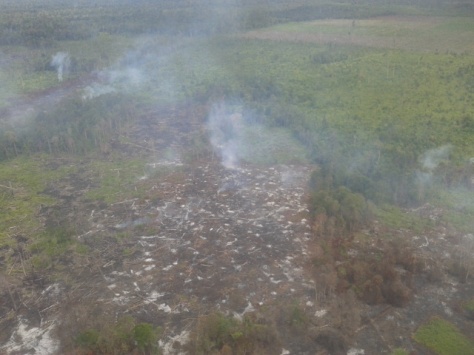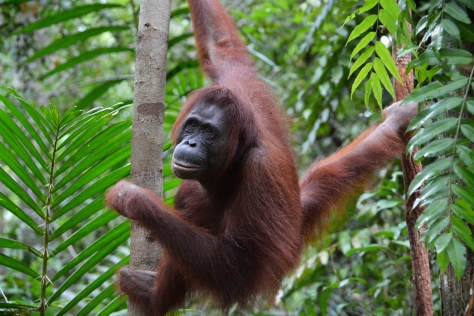Indonesia’s forests are burning as palm oil companies clear land to plant their cash crop, which is used in everything from cosmetics to food. That very same land is home to wild orangutans and other rare animals.
Satellite photography shows that about 100,000 fires have already burned in Indonesia since July, with thousands of those occurring deep in the forests and national parks across the islands of Sumatra and Borneo. These fires are threatening several animals, which include the rare clouded leopard, the iconic hornbill and as many as one third of the world’s remaining orangutans.
358 fire “hotspots” have been found inside the Sabangau Forest in Borneo, which is home to 7,000 wild orangutans – the world’s largest population. Fires are also occurring in the Tanjung Puting national park where 6,000 of the wild apes reside, the Katingan forest with 3,000 and the Mawas reserve with an estimated 3,500.

These kinds of fires produce an abundance of harmful gases and particulates, causing serious problems for both orangutans and humans. Up to 500,000 people have suffered respiratory infections, in addition to several orangutans. Communications manager for International Animal Rescue, which runs a rehabilitation center for more than 125 injured and orphaned orangutans in Ketapang, Borneo, Lis Key says:
“The problem with fire and smoke is absolutely dire. Wild orangutans and orangutans in centers like ours are badly affected by the smoke,” she said. “Some suffer upper respiratory tract infections, which can even prove fatal. Some of the babies we’ve taken in recently have been suffering not only from dehydration and malnourishment through lack of food but also breathing problems from the polluted air.”
Not only do the fires threaten orangutans with disease and malnutrition, but also with habitat loss. The apes are being pushed out of their homes into areas closer to humans, where they are killed or sold into the pet trade.

The fires have burned out of control from an unusually dry and windy season due El Niño weather patterns. And one of the worst parts of the fires is that they can occur underground, re-emerging away from the initial source. This makes them extremely difficult to extinguish and contain. Unfortunately, the Indonesian fires may not end the rainy season begins mid-November, if then.
Featured image by Andrew H / CC BY-ND 2.0

